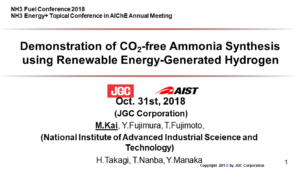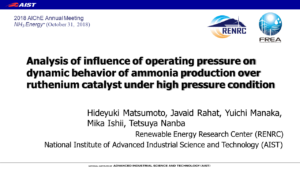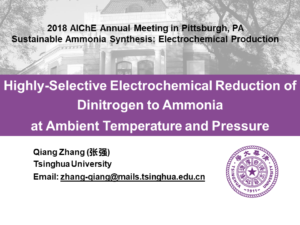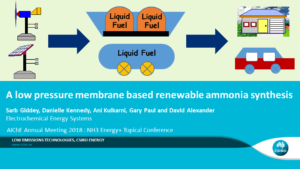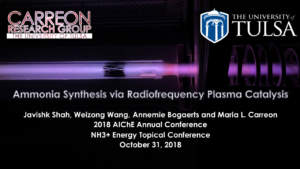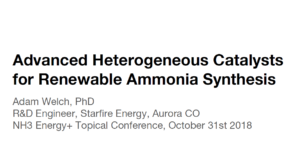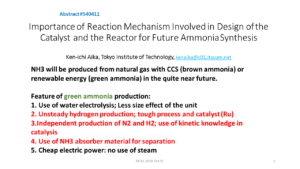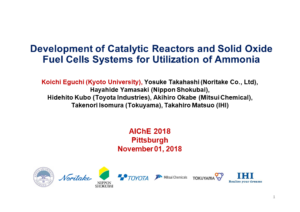Presentation
Demonstration of CO2-Free Ammonia Synthesis Using Renewable Energy-Generated Hydrogen
In Japan, the government funding project SIP, Strategic Innovation Promotion Program, supports the research, development and demonstration of “Energy Carriers”. The concept of the “Energy Carriers” value chain is to produce hydrogen energy carriers overseas from fossil resources using CCS or renewable energy, and transport it to Japan for utilization as clean energy. The purpose of the program is to help realize a low-carbon society in Japan by using hydrogen. Among energy carriers, ammonia is the one of the most promising carriers, because of the ease of transportation as a liquid, higher hydrogen density, and proven technologies for commercial and…
